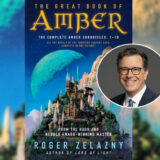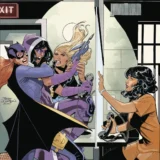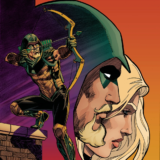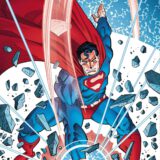Manga Friday: Growin’ Up

The theme is more random than ever this week, because – let’s be honest – it would be difficult to find four manga series that aren’t about teenagers. But these three books offer exceptionally varied takes on the eternal problems of adolescence, and that’s good enough for me!
Wolverine: Prodigal Son, Vol. 1
Story by Antony Johnson; Art by Wilson Tortosa
Del Rey Manga, April 2009, $12.99
Yes, that the X-Men Wolverine; the one whose big movie opens a week from today. But here he’s ripped out of the Marvel Universe and dropped into a manga-fied version of his life, where he’s a sullen teenager attending an all-martial-arts all-the-time high school somewhere in darkest Canada. And he’s not yet the best at what he does, though what he does, as ever, is not pretty. (Or nice, if you subscribe to Eastern Orthodox Wolverineism.) He’s also a lot whinier than you’d expect from Wolverine, with a host of insecurity issues.
That’s what makes it manga-style I suppose: the school setting, the bizarre hair, the complicated school projects-cum-training-sessions, the teenage protagonist who thinks no one likes him. The extended fight scenes and ninjas, though, were in Wolverine stories almost from the beginning, so any manga influence is buried under Claremont and Miller and Wein.
So Wolverine is tormented and misunderstood, having mysteriously appeared at this school with no knowledge of his past, and he coasts through his all-hitting school work by being really really good at martial arts. He’s got an almost-love affair going with Tamara, the daughter of the school’s head, and he’s in regular conflict with some other, more stereotyped members of the class.
But then the boss of the school takes him to New York as a treat, and things get really bad. The aforementioned ninjas show up, and…well, the back half of this volume is pretty much wall-to-wall fight scenes, with short breaks for emoting and monologing. There will be more, of course – there’s never a “volume one” without a two – and the last few pages have some higher-up villains cackling and wringing their hands as a preview of what’s in for Logan in that volume.
Prodigal Son is a serviceable mash-up of X-Men and shonen, but it’s also entirely disposable and has no real reason to exist besides pure brand extension. I guess it’s really for kids who might like to read stories about Marvel Mutants, but will only read comics if they’re drawn manga-style.

GA: Geijutsuka Art Design Class, Vol. 1
By Satoko Kiyuduki
Yen Press, April 2009, $10.99
Kiyuduki might be best-known over on this side of the Pacific for her manga series Shoulder-A-Coffin Kuro, which I’ve reviewed previously in this space. This is a somewhat different story – it’s very reminiscent of Sunshine Sketch, since it’s also the 4-panel adventures of a group of teenager female art-school students.
GA is more seriously about the school side of art school, though, while Sunshine Sketch was more about the personalities of the girls and their lives together in a boarding house. GA, by comparison, shows these five girls only at school, working on their various projects – and, in best manga fashion, they declaim that they’ll do their best several times before the book is done.
Now, this is in 4-panel style; with two newspaper-strip style pieces running vertically down each page (except for the slightly more expansive color intros to each section). And the characters all have the same school uniform and facial features. In color, they’re pretty easy to tell apart by hair color, but in the bulk of the book…I found myself recognizing the one with glasses (Kirasagi) and squinting to see if I could tell if any of the others had barrettes. Yes, they do all have different hairstyles, but, when that’s the only difference, it can be difficult to work out.
I also have to admit that most of the jokes in this book sailed right over my head: they’re all either Japanese-culture jokes (often, more specifically, based-on-manga-stereotypes jokes) or art-student jokes, and I’m not well versed in either of those things. There was one strip that made me laugh, mostly because my younger son does something similar. But I can’t really recommend this to readers who don’t already know a lot about the subject.

By Kim Dong Hwa
Yen Press, April 2009, $16.95
Hwa – or perhaps Dong Hwa; I’m uncertain where the personal name ends and the family name begins – is a noted Korean manwha creator of stories for young women, but this book saw him leap forward to a higher level of acclaim and success. (At least, it did according to the publisher’s materials and to an afterword by professor and editor Hwang Min-Ho.) Color of Earth is the first of three books in which Hwa retold the story of his mother’s girlhood in the early decades of the twentieth century; it will be followed by The Color of Water and The Color of Heaven.
Ehwa is seven when the book opens, and the early sections see her grow to be a teenager, and detail how she learns about life and love (often in the very down-to-earth ways common to rural people the world over). She’s very close to her widowed mother, who keeps a tavern on the outskirts of a small town – even though her mother gets very little respect from her (male, and usually drunk) customers.
The stories follow the rhythms and concerns of rural life in a traditional society; Ehwa’s world is one of fields and woods, growing things and natural forces. She grows up into a pretty girl and falls in love (maybe) with a young monk, as her mother also begins a relationship with an itinerant salesman.
Hwa’s art is quiet and evocative, dropping the reader immediately into the Korean lan
dscape and making it come to life around him. His characters are defined by a few clear lines, but the backgrounds are gorgeously detailed and often stretch sensuously across the page. He also, interestingly, draws eyes usually as an almost-smear of horizontal lines – more like a Western conception of Asian eyes than the typical manga and manwha eyes, open and expressive to show emotion and character. Hwa’s characters are traditional, perhaps – guarding their emotions and selves behind tightly controlled eyes and pursed lips.
It’s difficult to judge an story from the first third, but The Color of Earth, despite ending in the middle, is lovely and touchingly true, a story of young love and growing up as universal and achingly real as The Pigman or A Separate Peace.
Andrew Wheeler has been a publishing professional for nearly twenty years, with a long stint as a Senior Editor at the Science Fiction Book Club and a current position at John Wiley & Sons. He’s been reading comics for longer than he cares to mention, and maintains a personal, mostly book-oriented blog at antickmusings.blogspot.com.
Publishers who would like to submit books for review should contact ComicMix through the usual channels or email Andrew Wheeler directly at acwheele (at) optonline (dot) net.












